 |
| Wildflower walk in Jubilee Country Park, 2 June 2012. |
This was a regular annual walk in Jubilee Country Park, specifically to look at the wildflower population. It was introduced by the Chairman of the Friends group, Jennie Randall, and led by John Bruce and Sally Morris.
It was a week earlier than the
walk in 2011, and there was much less on show - there was less general development, even allowing for the week's difference. The odd weather pattern this year probably accounts for that.
But we still saw a lot, and I also managed to get some photos of invertebrates, though we didn't see many, and in particular, not a single butterfly on this cold and overcast morning.
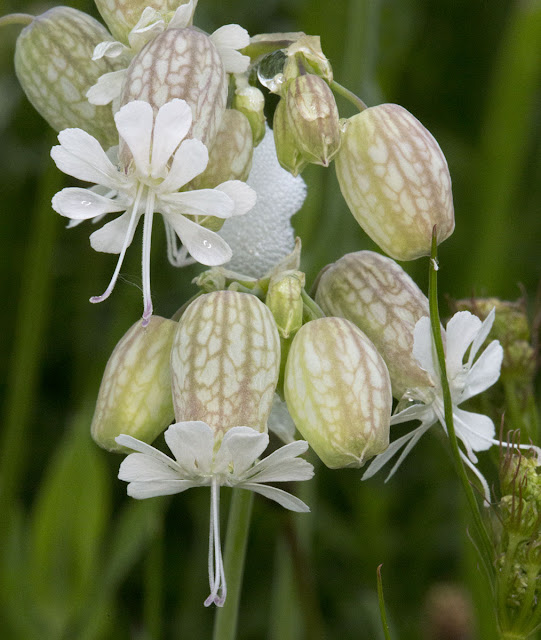 |
| Bladder Campion, Silene vulgaris. Jubilee Country Park, 2 June 2012. |
This was my favourite flower of the day. The delicate white lanterns of Bladder Campion, each with three long, mauve-tipped styles hanging from them. We saw one cluster of these plants in one of the meadows. On this plant you can also see what we used to call Cuckoo-spit; a cluster of bubbles which shelter the young of froghoppers, which live by sucking the plant's sap.
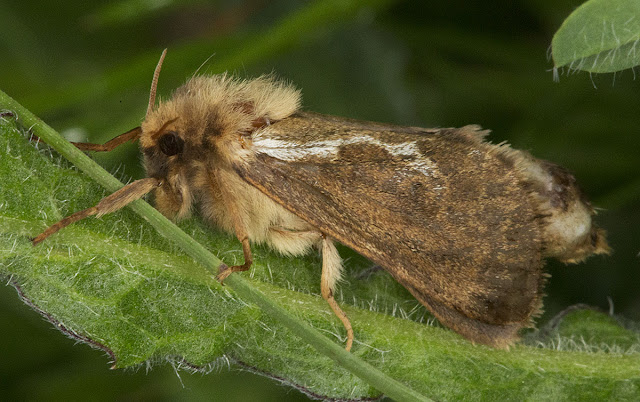 |
| Common Swift, Hepalius lupulinus. Jubilee Country Park, 2 June 2012. |
And this was my favourite insect. In the absence of butterflies, at least there were several moths. This one was pointed out by the group; I followed and caught it, and held it gently in my hand while I chased and photographed yet another moth, shown below, then released this one where I could capture its image. So this photo represents more work than usual.
It's not really a day-flying moth and must have been disturbed by the party. It's one of a group of moths that hold their wings close to their sides when resting, whereas most of the larger moths hold their forewings out, flat to the ground.
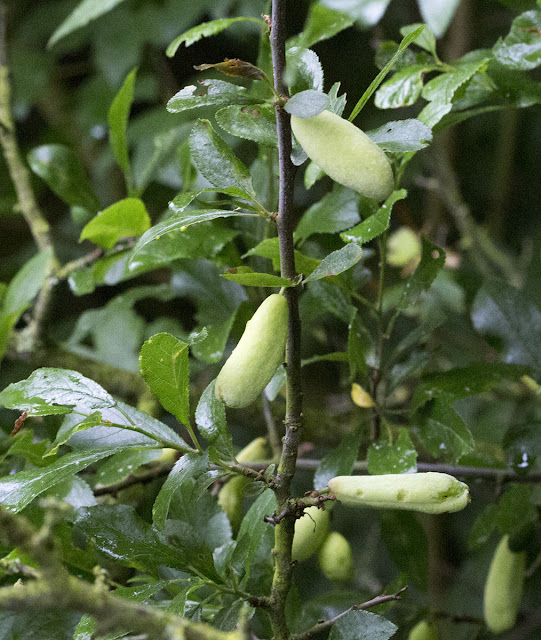 |
| Galls on Blackthorn, Prunus spinosa, caused by a fungus, Taphrina pruni. Jubilee Country Park, 2 June 2012. |
We also saw a couple of interesting galls. This one turned up in a couple of places and puzzled the group, but I was able to identify it at home with the aid of one of my books. Those pods take the place of the expected sloes, and are empty. This is caused by a fungus that infects the bush, destroying the seed and stone, and later the pods will turn grey or brown, covered with the tiny fruiting bodies of the fungus. It infects the stems and will still be there next year.
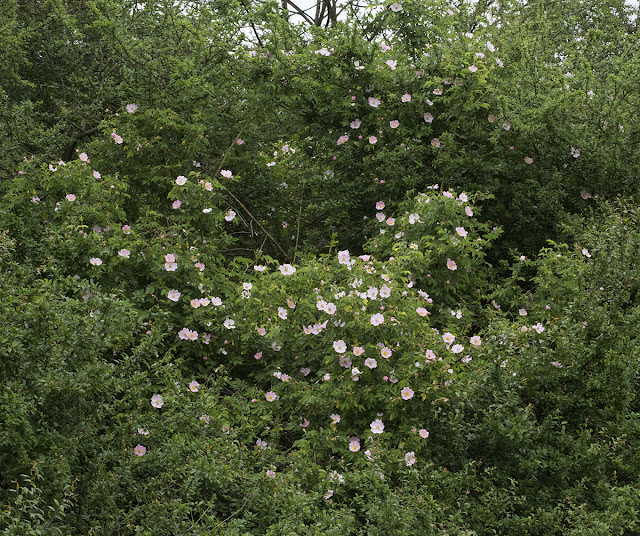 |
| Rose bush in the hedgerow. Jubilee Country Park, 2 June 2012. |
This prolific rose bush was also in a hedgerow. It's probably a Dog Rose, Rosa canina, but I can't be sure without a closer examination.
After a while I felt as though my trainers had been filled with water and I was wading. The grass was soaked, and we made several forays off the paths to see interesting plants. This one was the prize:
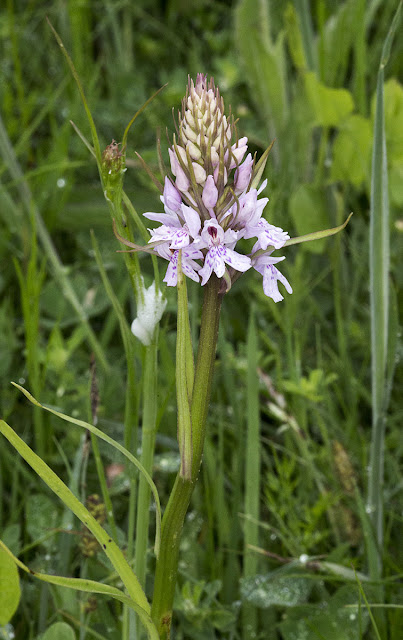 |
| Common Spotted Orchid, Dactylorhiza fuchsii. Jubilee Country Park, 2 June 2012. |
Probably our commonest orchid, but not at all common in this park, which is mostly on acid soils. It is likely that the large concrete slabs of the wartime gun emplacements have caused enough alkalinity to allow some orchids to grow even half a century later. We found four flowering stems; this is what the top photo shows.
Here's another insect.
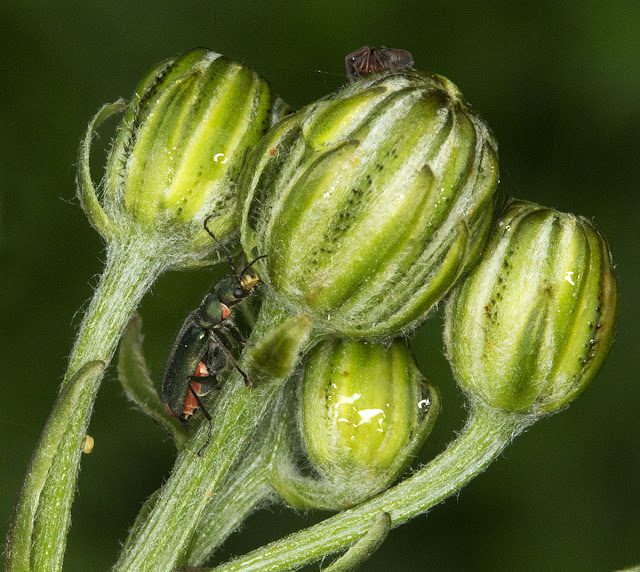 |
| Malachite Beetle, Malachius bipustulatus. Jubilee Country Park, 2 June 2012. |
We saw a few of these Malachite Beetles. They are small, but quite showy, with a shiny green carapace and orange body. From above, you can see two orange spots at the ends of its wing-cases, which give it its Latin species name. I don't suppose the spider on top of the buds was actually aware of it; it was probably more worried by the way I was bending the plant over to take the photo!
It's interesting that beetles, which seem so shiny and smooth to the naked eye, turn out to be hairy all over when you see them close up.
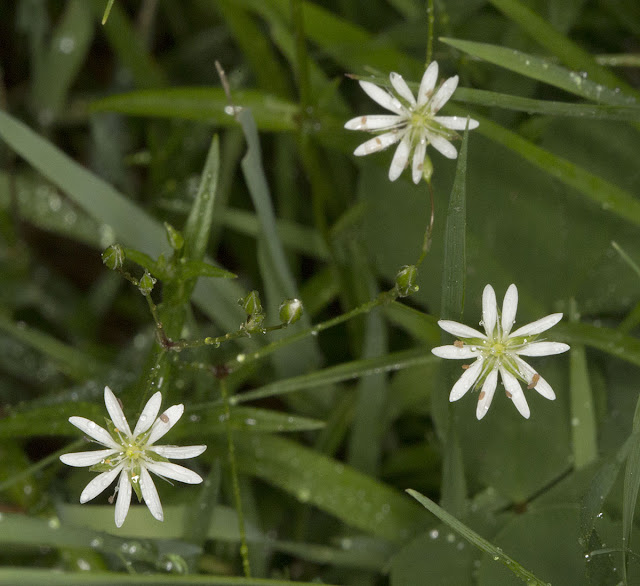 |
| Lesser Stitchwort, Stellaria graminea. Jubilee Country Park, 2 June 2012. |
Tiny white stars in the grass, as its Latin name suggests.
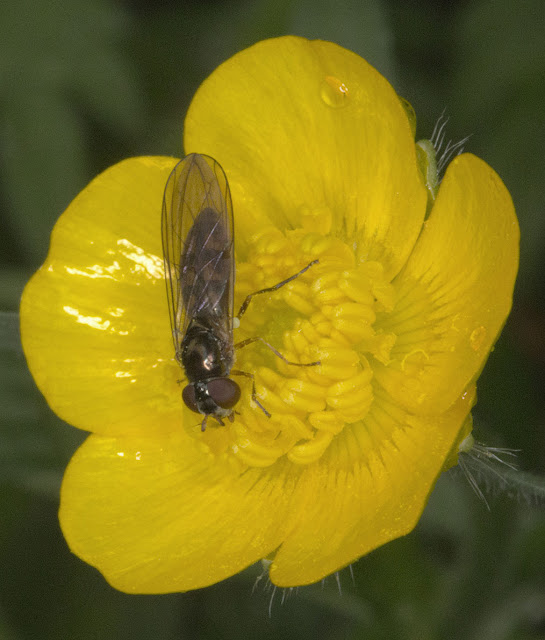 |
| Melanostoma scalare, a Hoverfly, in a Meadow Buttercup flower. Jubilee Country Park, 2 June 2012. |
From head height these look like small black flies, but they actually have a typical Hoverfly coloration with yellow triangles on a black abdomen, in a shape that is typical of this species. There is a gap between the eyes, so this is a female, and it has triangular "dust" marks on the front of its face, another identifier for the species.
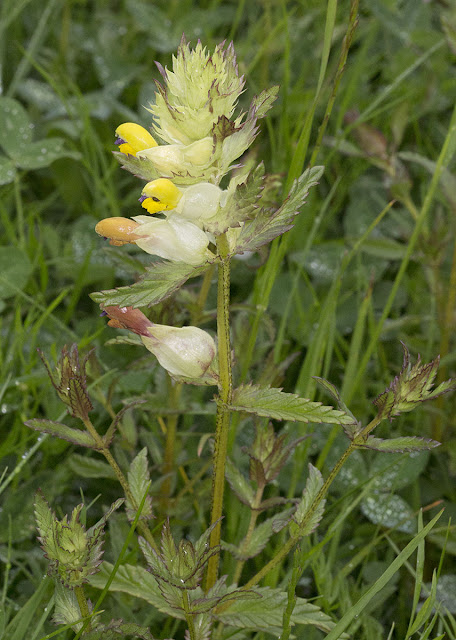 |
| Yellow Rattle, Rhinanthus minor. Jubilee Country Park, 2 June 2012. |
This was another one we slogged though the wet grass to see! When the fruit dries out, it rattles, and this is supposed to indicate that it's harvest time.
Here's the other moth I chased:
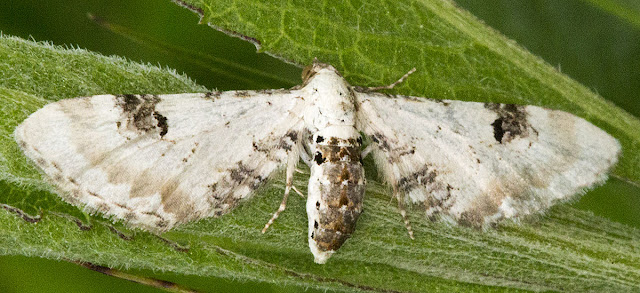 |
| Lime-speck Pug, Eupithecia centaureata. Jubilee Country Park, 2 June 2012. |
Like some other small moths, it looks rather like a bird dropping from any distance, and this should help it to fool predators.
This quick run-through only shows a fraction of the things we saw. Next year, we will probably go round one or two weeks later and it will be even better and more interesting, so if you are within reach you might like to join in.
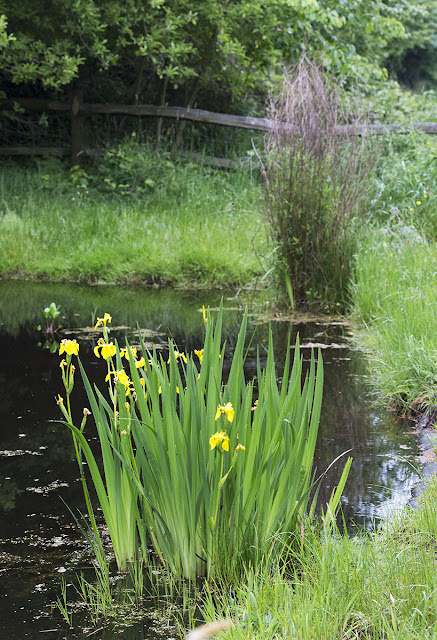 |
Yellow Iris, Iris pseudacorus. Last year's Purple Loosestrife, Lythrum salicaria, is in the background.
Ray's Pond, Jubilee Country Park, 2 June 2012. |
These photos and a few others from the day are in an on-line Picasa album here:
Jubilee Country Park, 2 June 2012.












No comments:
Post a Comment